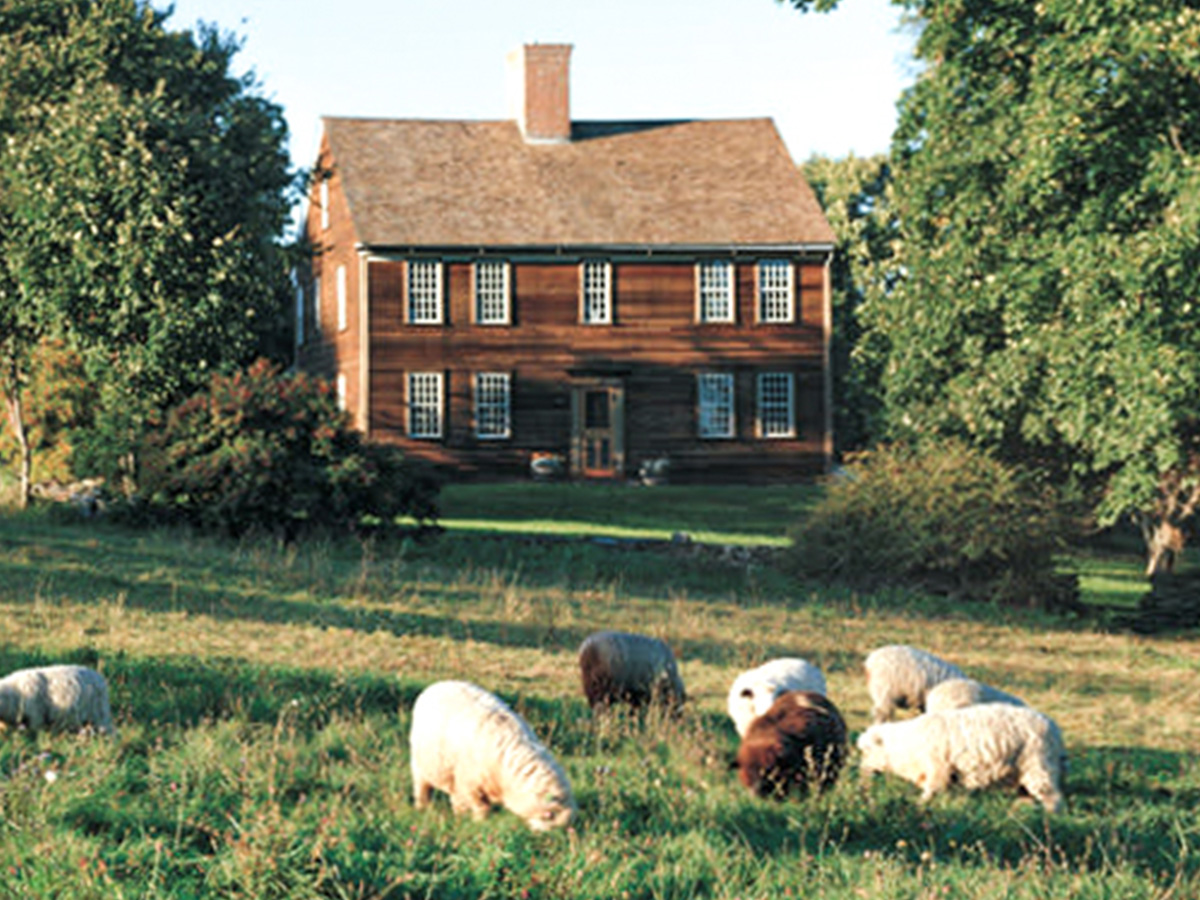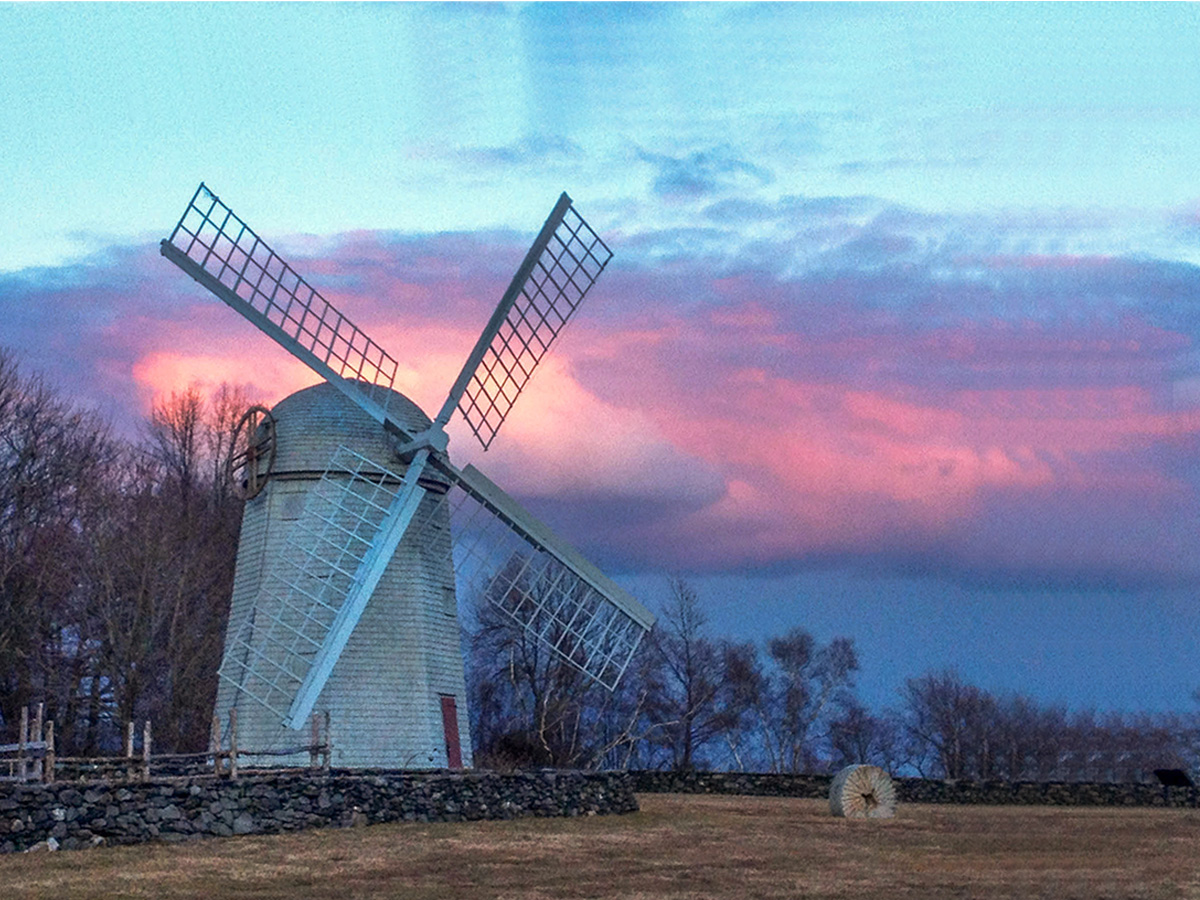Jamestown, Rhode Island Light House
Jamestown, Rhode Island was first established in 1678 by the Massachusetts Bay Company on Conanicut Island, the second largest island in the Narragansett Bay. Its rich and long history is well reflected in the community’s architecture. From the modest early 17th-century dwellings and grand 19th-century shingle style summer homes, to elegant contemporary structures, the island’s buildings tell a story of settlement, transformation, and enduring beauty of an enclave that has always seen itself as a special place.
The earliest European settlers in Jamestown, who arrived in the mid to late seventeenth century, were primarily farmers. Their homes reflected a practical, no-nonsense approach typical of the colonial era. Simple, one-and-a-half story structures with central chimneys were built using local wood, with stone foundations. Examples of this architectural style can still be found around Conanicut Island, offering a glimpse into the lives of Jamestown’s earliest residents. The rustic and rugged Watson Farm House of 1796 is a good example of this period of the island’s architectural development.

Watson Farm
The 18th century brought about significant changes to Jamestown’s architectural landscape. The island played a role in the American Revolution, with Fort Dumpling serving as a critical defensive point. The Jamestown Windmill, destroyed during the British occupation, was rebuilt in 1787, showcasing the community’s resilience. Additionally, Georgian, an architecture characterized by symmetry and proportion, began to emerge in some structures as was occurring in Newport, Jamestown a close neighbor located across the East Passage of the Narragansett Bay.
The development of a reliable ferry service to Newport in the late 19th century transformed Jamestown. The island became a popular destination for summer visitors and wealthy residents seeking a seaside escape, particularly those from Philadelphia. This period witnessed a surge in grand architectural styles. Opulent summer homes with wraparound porches, shingle siding, and Queen Anne Revival detailing became a hallmark of the island’s aesthetic. The grand Joseph Wharton House, also called Marbella or Horsehead, located at the southern end of the community overlooking the Atlantic Ocean, is an exceptional example of this period and style of architecture.

Marbella-Horsehead
Throughout its history, the residents of Jamestown have taken pride in preserving their architectural heritage. The Jamestown Historical Society continues to play a crucial role in documenting and safeguarding historic structures. For example, a book produced by the Society, “The Building Boom in Jamestown, Rhode Island, 1926-1931,” offers a wonderful, detailed look into that specific period of architectural development on the island. The organization continues to own the Jamestown Windmill, which it opens to the public in the summer months.

Jamestown Windmill
Today, Jamestown’s architectural tapestry continues to evolve. Because of its privacy and yet accessibility to New York and Boston, Conanicut Island has become a desired summer enclave for the wealthy, while maintaining much of its small-town charm. Because there are only very limited municipal sewage facilities, the vast majority of new construction is dependent upon the limited septic capacity of the project sites, which has served as a limitation to new construction on the island, but also as a accelerant to the price per share foot for building there, particularly over the last thirty years. New construction generally blends seamlessly with the historic character, ensuring the island retains its unique charm. Whether exploring the quaint gambrel roofs of 18th-century homes or marveling at the Victorian grandeur of summer estates, Jamestown offers a captivating journey through time, with each architectural element whispering stories of the island’s rich past.

Estes-Twombley Contemporary House
Looking to remodel your home? Let’s connect.
Join the Architectural Forum to stay up-to-date with architectural news from Rhode Island and abroad.
Ross Sinclair Cann, RA, AIA, LEED AP, is an author, historian, educator, and practicing architect living and working in Newport, RI. He studied with Professor Scully as an undergraduate at Yale and was a teaching assistant for Robert A.M Stern at the Columbia School of Architecture in New York.
At A4 Architecture + Planning we are expert at integrating building codes into our designs to provide safer and more long-lasting building solutions for our clients. If you are interested in learning more about what can do for you reach out to us at any time!
